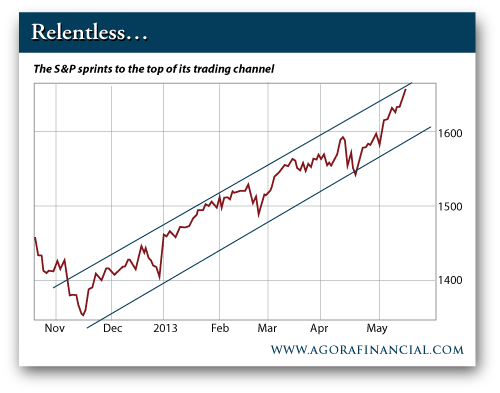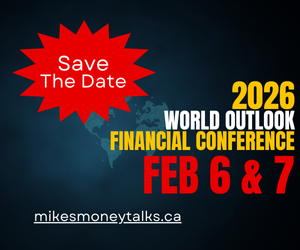Personal Finance
 “It seems that Mr. Bernanke may be leaving in a few months.”
“It seems that Mr. Bernanke may be leaving in a few months.”
The Federal Reserve is pumping up the economy and financial markets with its massive easing tactics, and central bank Chairman Ben Bernanke might not seek another term because he doesn’t want to deal with the “hangover” aftermath of his policies, says legendary investor Jim Rogers, chairman of Rogers Holdings.
“Right now we have a very artificial situation. You have the central bank in America printing staggering amounts of money,” he tells Newsmax TV in an exclusive interview.
“There’s this gigantic artificial flow of money floating into our economy, and this is going to end badly because it is artificial.”
….read more & or view video HERE

When the only people who where packing guns were crooks, and law enforcers, it was relatively low risk for criminals to commit crimes against unarmed citizens. These new studies seem to suggest the bad guy’s have been moving towards other occupations since their risk has naturally soared right alongside skyrocketing citizen gun ownership….
 “A couple of new studies reveal the gun-control hypesters’ worst nightmare…more people are buying firearms, while firearm-related homicides and suicides are steadily diminishing. What crackpots came up with these conclusions? One set of statistics was compiled by the U.S. Department of Justice. The other was reported by the Pew Research Center.
“A couple of new studies reveal the gun-control hypesters’ worst nightmare…more people are buying firearms, while firearm-related homicides and suicides are steadily diminishing. What crackpots came up with these conclusions? One set of statistics was compiled by the U.S. Department of Justice. The other was reported by the Pew Research Center.
According to DOJ’s Bureau of Justice Statistics, U.S. gun-related homicides dropped 39 percent over the course of 18 years, from 18,253 during 1993, to 11,101 in 2011. During the same period, non-fatal firearm crimes decreased even more, a whopping 69 percent. The majority of those declines in both categories occurred during the first 10 years of that time frame. Firearm homicides declined from 1993 to 1999, rose through 2006, and then declined again through 2011. Non-fatal firearm violence declined from 1993 through 2004, then fluctuated in the mid-to-late 2000s.
And where did the bad people who did the shooting get most of their guns? Were those gun show “loopholes” responsible? Nope. According to surveys DOJ conducted of state prison inmates during 2004 (the most recent year of data available), only two percent who owned a gun at the time of their offense bought it at either a gun show or flea market. About 10 percent said they purchased their gun from a retail shop or pawnshop, 37 percent obtained it from family or friends, and another 40 percent obtained it from an illegal source.
While firearm violence accounted for about 70 percent of all homicides between 1993 and 2011, guns were used in less than 10 percent of all non-fatal violent crimes. Between 70 percent and 80 percent of those firearm homicides involved a handgun, and 90 percent of non-fatal firearm victimizations were committed with a handgun. Males, blacks, and persons aged 18-24 had the highest firearm homicide rates.
The March Pew study….
…..read it all HERE

 And say hello to the breakthrough technology that’s launching a 21st-century industrial revolution right here in America. Business Insider calls it “the next trillion dollar industry.”
And say hello to the breakthrough technology that’s launching a 21st-century industrial revolution right here in America. Business Insider calls it “the next trillion dollar industry.”
The suits on Wall Street think this idea is too good to be true. But the guys who brought you the iPod and Amazon.com are already on board. You still have time to join them, if you act fast…
…..read it all HERE

- Don’t chase euphoria—buy the bounce
- Where’s the next low-risk buying opportunity?
- Plus: More on gold’s recent drop
Predicting the direction of the major indexes on a day-to-day basis is an impossible feat. Attempting to play the market’s movements by the hour or minute will cause you to go insane (and lose all of your money in the process).
But if you take a step back from the intraday noise, the market paints a picture that can help you time your long-term investments and trades.
Since the broad market bottomed in mid-November, stocks have moved higher within a rising channel. It doesn’t take a lot of technical know-how to see the price extremes. The chart clearly shows where the market typically becomes overheated, and where it bounces after a pullback.

As you can see, the S&P’s May rally puts the index at the very top of its trading channel. This is the point where many investors are sucked into the euphoria of the quick move higher. But if you’ve been paying attention, you know this isn’t the best place for a low-risk buy.
Could the market sprint even higher from here? It’s possible. But a more likely outcome is a pause at the top of the channel as stocks become overextended. When the market finally does flatten out and move closer to the bottom of its channel, you’ll have an ideal buying opportunity.
Remember to keep a close eye on the technology and biotech sectors. Over the past couple of weeks, the rally has broadened and these are two groups that are trying to take the lead. When we do get that low-risk buying opportunity, this should be the first place you look for a new trade…


| Thanks to more downside action, I’ve received a lot of gold questions…
Here’s one: When do you think gold stocks are going to start rallying? Hard to say. As of last night, it doesn’t look like miners have much fight in them. Gold continues to trend lower and miners are getting crushed left and right. I’ve been searching for a snapback rally (in the miners, not the metal) for several weeks now. Nothing has triggered. I know it’s tempting to go after a position in the Market Vectors Gold Miners ETF—especially since it’s massively oversold. But “oversold” is no guarantee that higher prices are in store for us anytime soon. In short, the miners are all falling knives. They could continue to move lower from here… Here’s another: “I would like to know what you think about price of gold in the long-term (3 to 5 years). As you know, most of the Agora writers are very bullish on gold. Do you share their bullishness?” My price target for gold is $1,000 (give or take $100). I can’t tell you the exact date it will arrive at this target. All I know is that it will take more time. But in 5 years? I’m not sure. My guess is that in 5 years, the price of gold will still be below $2,000 an ounce. A lot can happen in 5 years. We’ll experience new political policies, wars, triumphs, tragedies, and technological advancements. Most importantly, we’ll have the chance to reevaluate our thinking every few months or so. After all, any prediction becomes a wild guess once it reaches far enough into the future. There are no guarantees in any market. Gold is no exception. It is not immune to selling pressure or trend changes. [Ed. Note: Send your feedback here: rude@agorafinancial.com – and follow me on Twitter: @GregGuenthner] |
Today’s Must-Read Links |

 Edward Hugh presents a guest post by Valter Martins on population dynamics in Portugal, and argues once again that emigration from the eurozone periphery, which is exacerbating labor conditions, requires attention.
Edward Hugh presents a guest post by Valter Martins on population dynamics in Portugal, and argues once again that emigration from the eurozone periphery, which is exacerbating labor conditions, requires attention.- Ed Dolan argues for looking at broader interests in deciding whether to allow increased natural gas exports from the U.S., as the White House appears on the verge of approving new permits.
- Steven Strauss looks at drivers of change that could shape the future: Aging population, climate change, next 9/11 are among them, but are we prepared?
- Robert Kahn thinks that linking debt-ceiling increases to corporate tax reform might be the best alternative to prevent another cliff showdown, and analyzes whether falling labor force participation rate in the U.S. justifies easier monetary policy by Fed for longer.
- L. Randall Wray shared his presentation that argues the monetary system needs to pursue the public purpose, supporting countries other than their own.
- Otaviano Canuto argues that what global financial crisis has shown is that monetary policy and financial supervision have to go hand in hand to ensure macro stability.
- Alejandro Werner writes that while conditions in Latin America are favorable, future growth will have to be fueled by productivity gains—not an easy task.
And now, the best of the rest …
United States
- Weighing the Week Ahead: Are Consumers Ready to Buy? What About Housing? by Jeffrey Miller
- Wall Street Hiring More Ex-Government Prostitutes Officials to Assure It Gets Its Way by Yves Smith
- Macro-Markets Risk Index by James Picerno
- U.S. Treasury Secretary Jack Lew Places Blame on Congress by Yves Smith
- Heritage Assesses the Ever-Expanding Ever-Centralizing Federal Government Sector by Menzie Chinn
- Another 5-Year Low For Jobless Claims by James Picerno
- Great Graphic: US Jobs Market in One Picture by Marc Chandler
Global Macro
- Central Banks Drive the Stock Market Boom by David Smith
- Macro Overview by Marc Chandler
- How Bond Market Vigilantes Force Rates Higher by Edward Harrison
- BoE On Hold as Manufacturing Perks Up by David Smith
- The Road to Liikanen by Michael Beaton
- Great Graphic: Base Money and Money Supply by Marc Chandler
Finance and Markets
- Boring, Diversified, And (Still) Tough To Beat by James Picerno
- Two Key Drivers Lift Dollar, Pressure Yen by Marc Chandler
- No ‘Peak Natural Gas’ Anytime Soon by Robert M. Cutler
- The Soaring Stock Market by James Hamilton
- Dow 20K – Halfway There by Jeffrey Miller
- The Whole & The Parts by James Picerno
- 14,000 by Tim Duy
Asia
- Abenomics Confusion by David Beckworth
- China Wrestles With Hot Money–from Locals by Marc Chandler
- Really? One Basis Point? by Tim Duy












